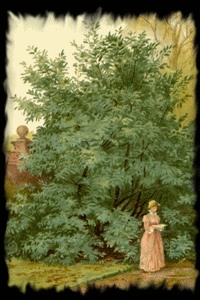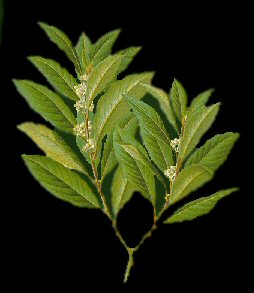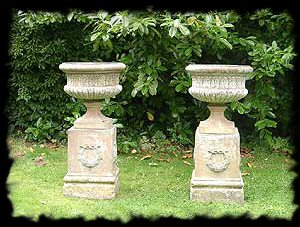|
|

T h e G a r d e n
 As well as been mythological, the laurel tree is used also as a merely decorative plant. Lately, the tree has became a trend and can be
found in more and more gardens.
As well as been mythological, the laurel tree is used also as a merely decorative plant. Lately, the tree has became a trend and can be
found in more and more gardens.
On the Right: Laurel Bush © 2003 LoveToKnow.
They are native to Mediterranean type climate with mild winters and hot, dry summers.
A native of the Mediterranean region, with its mid winters and hot dry summers, the Bay Laurel can reach a height approaching 6 meters, but in less favourable conditions, it is more usual to find a height of around 2 meters. It will not tolerate a frost, and so in countries where this is a problem it is more usual to find the plant growing in a movable container which can be brought inside during the winter months. It is a true evergreen with aromatic thick shiny elliptic leaves. It is slow growing, and, as it will tolerate heavy pruning, it is more usual to find the cultivated plants much smaller. Bay leaves have a delicate and slightly aromatic scent, and add a mildly bitter flavour to food.
It has inconspicuous white flowers, which arrive in clusters in May, and bears small, red-blue single-seeded berries that later turn black. It propagates readily from cuttings, tolerates neglect, and does well when put outdoors for the summer.
The species is know for having a rapid growth rate, and can increase from
anything between one to three feet in height in a single year; but is somewhat more susceptible
to the action of frost than its congener, the Portugal Laurel.

On the left: the picture of the laurel tree’s branch, which is also known in English as "bay". © 2006 Missouri Botanical
Garden, used by permission.
• Top•
These days we mainly know the laurel plant as a spice, however, in many countries this tree remains as strictly decorative plant. As
has been the Mediterranean type, in Jerusalem (Israel), for example. In the west part, outside the Old City, there are huge farms of
laurel trees, in the vicinity of tourist centres where people rest under their astonishingly beautiful branches.
In India, however, the bay is grown on a relatively small scale in homestead gardens. It has become an incredibly appealing
plant with which to decorate our gardens.
Another traditional use for the laurel wreath left over from Antiquity, is the tradition of
incorporating the wreath as part of architecture, and this can be often seen in today`s gardens, engraved upon stone columns,
fountains, and even garden-vases. See picture below.
(Garden vases © 2000-2004 Dream Interactive, used by permission).


|

